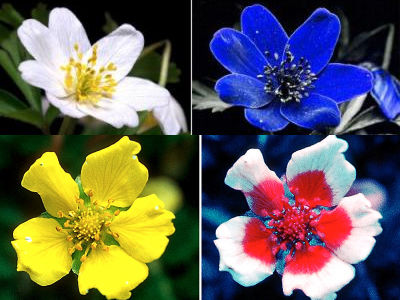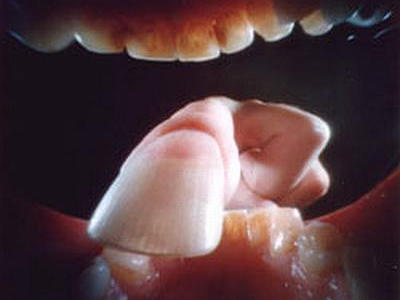This is a natural enemy of hay fever, a photomicrograph of beautiful colored pollen variously
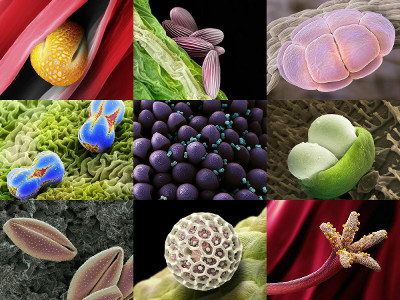
in Japanhay feverI meanCedar pollenThough it is mainstream, pollinosis cause plants are not only cedar.
Switzerland photographer Martin Oeggerli, who is suffering from sneezing, runny nose and itching of eyes, has not seen people who have seen the pollen appearance causing it,Scanning electron microscopeThe coloring photographs of various pollen photographed with, show us the appearance of beautiful "invisible enemies" unexpectedly.
Details are as below.Microscopic images reveal the invisible enemy faced by hayfever sufferers | Mail Online
Dr. Martin Oeggerli who photographs pollen with a scanning electron microscope of about 36 million yen owned at home and colors a black and white image one by one with a computer says, "Due to the mixture of science and art, Is aiming to reveal the area that is hidden but unexpectedly beautiful, "he says his work.
10 photographs of one pollen was done by a work suitable for a laboratory of a university rather than a photographer's studio of coating pollen in gold in advance, fixing it on a slide, placing it in a vacuum sample chamber and scanning an electron beam It takes about 2 days to get it.
AlderPollen of. Many alder pollen allergies are found in Europe, but it seems that alnus pollinosis is frequent in Japan such as Hokuriku.
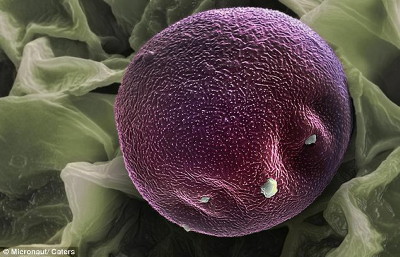
Pine treePollen of. It looks like a crispy fertilizer.

Stuck in the petalWillowPollen of. Since willow pollinates through insects, it tends to be thought that pollen is not scattered much, but it seems to be a cause of hay fever.

BokehPollen of.
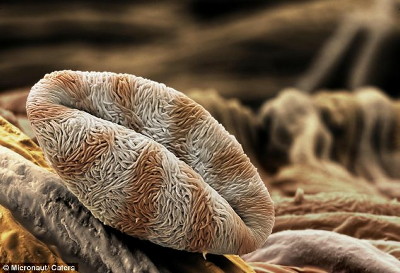
WaslenagsaPollen of.
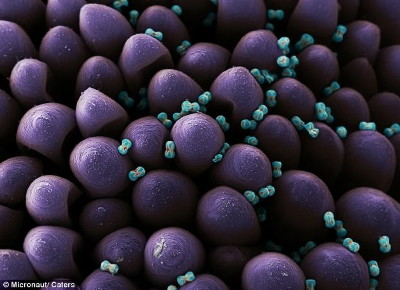
Pollen of Was lengsa seen at higher magnification. It is the smallest category among pollen of various plants, only 0.006 mm.
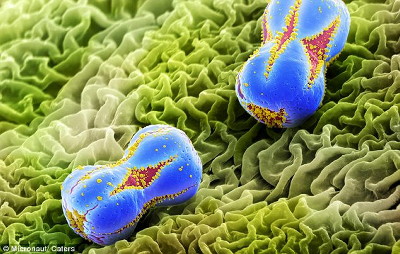
This is like CrustaceanNemnockPollen of. It is about 15 times the size of the pollen of Wasenagsa above.
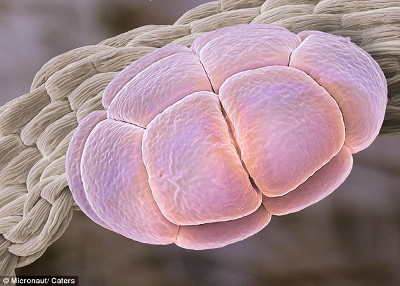
Pollen size varies. In the centerPumpkinThe pollen is about 0.2 mm in diameter, and is somehow large enough to be seen with the naked eye. The small light blue grain at the lower right is the pollen of Wasenagsa.
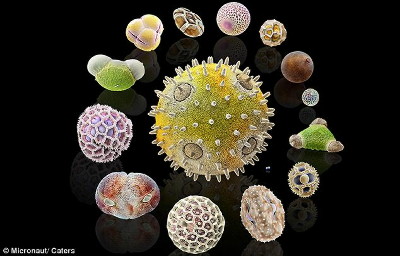
Shell-like shapedYuripollen.
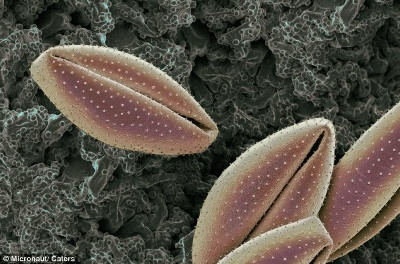
AcanthusPollen of.
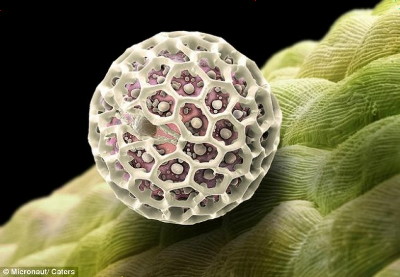
yellowGeraniumPollen of. By the way, the geranium is predominantly pink, red, purple line, the color which can be called "yellow" rather than the cream color seems to succeed in breeding for the first time in 2006.
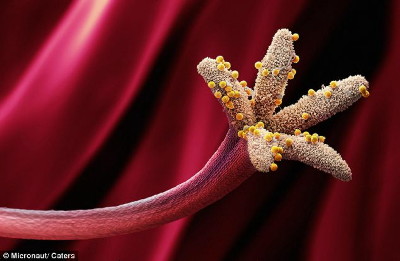
XeniaoiThe pollen of it may seem rusty if it inhales, it may be the shape of pollen as imaged.
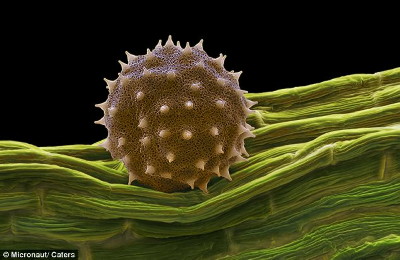
Fly trussPollen of. The part that captures the insects of fly trussa is leaves, not flowers, white cute flowers are blooming on a different stem from that leaf.
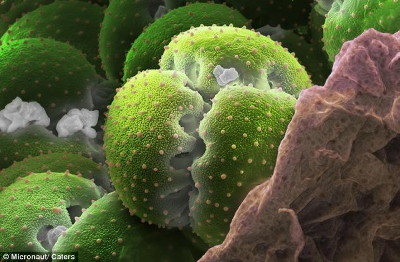
Button ducksaPollen of. Button duckweed is known under the name "water lettuce", it is regarded as a problem, naturalized in rivers and lakes around the world and breeding extensively. Normally it grows throughout the year by asexual reproduction that stretches the stem and produces a child stock, but depending on the season it will bloom even in sexual reproduction that blooms and fruits, in which case pollen flies.
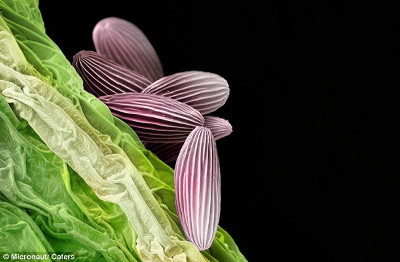
Related Posts:
in Science, Posted by darkhorse_log
